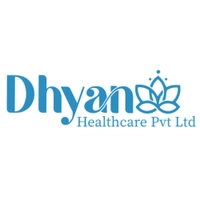Introduction
Deep Vein Thrombosis (DVT) is a serious medical condition characterized by the formation of blood clots in deep veins, typically in the legs. If left untreated, DVT can lead to severe complications such as pulmonary embolism (PE), a potentially life-threatening condition. At Dhyan Healthcare, we are committed to providing comprehensive care and effective treatment options for individuals dealing with DVT.
What is Deep Vein Thrombosis (DVT)?
DVT occurs when a blood clot forms in one of the deep veins of the body, usually in the legs. These clots can partially or completely block blood flow, leading to symptoms such as pain, swelling, and warmth in the affected limb. DVT can occur suddenly or develop gradually over time and can be caused by a variety of factors, including prolonged immobility, injury, surgery, or underlying medical conditions.
Causes and Risk Factors
The development of DVT can be influenced by various factors, including:
- Prolonged Immobility: Long periods of immobility, such as during long flights or bed rest, can increase the risk of DVT.
- Surgery or Trauma: Major surgery, particularly orthopedic surgery involving the lower limbs, and trauma such as fractures or severe muscle injury can increase the risk of DVT.
- Medical Conditions: Certain medical conditions such as cancer, heart disease, and inflammatory disorders can increase the risk of DVT.
- Pregnancy and Hormonal Factors: Pregnancy, hormone replacement therapy, and oral contraceptives can increase the risk of DVT due to changes in hormone levels.
- Genetic Factors: Inherited blood clotting disorders such as Factor V Leiden mutation or prothrombin gene mutation can increase the risk of DVT.
Symptoms
The symptoms of DVT can vary but commonly include:
- Pain and Swelling: Pain, tenderness, or cramping in the affected limb, often accompanied by swelling.
- Warmth and Redness: The affected area may feel warm to the touch and appear red or discolored.
- Visible Veins: Swollen or enlarged veins may be visible just beneath the surface of the skin.
- Symptoms of Pulmonary Embolism (PE): In severe cases, DVT can lead to PE, which may cause symptoms such as shortness of breath, chest pain, rapid heart rate, and coughing up blood.
Diagnosis
Diagnosing DVT involves:
- Medical History and Physical Examination: Your healthcare provider will review your symptoms, medical history, and perform a physical examination to assess for signs of DVT.
- Imaging Tests: Imaging tests such as ultrasound, venography, or MRI may be ordered to visualize the affected veins and confirm the presence of blood clots.
- Blood Tests: Blood tests such as D-dimer test may be performed to measure levels of a substance that indicates the presence of blood clots.
Treatment Options
The treatment for DVT aims to prevent the clot from growing larger, reduce the risk of complications such as PE, and prevent the formation of new clots. Treatment options may include:
-
Anticoagulant Medications:
- Heparin: Given initially to prevent further clotting.
- Warfarin or Direct Oral Anticoagulants (DOACs): Taken orally to prevent blood clots from forming or growing larger.
- Thrombolytics: Medications that dissolve blood clots may be used in severe cases of DVT.
-
Compression Therapy:
- Wearing compression stockings to help prevent swelling and improve blood flow in the legs.
-
Inferior Vena Cava (IVC) Filter:
- A device inserted into the inferior vena cava to catch blood clots and prevent them from traveling to the lungs.
-
Lifestyle Modifications:
- Staying physically active, maintaining a healthy weight, and avoiding prolonged periods of immobility can help reduce the risk of DVT.
Post-treatment Care and Prevention
Effective post-treatment care and prevention strategies for DVT include:
- Medication Compliance: Take prescribed anticoagulant medications as directed to prevent recurrence of DVT.
- Regular Monitoring: Attend regular follow-up appointments with your healthcare provider to monitor progress and adjust treatment as needed.
- Compression Therapy: Continue wearing compression stockings as prescribed to prevent swelling and improve blood flow.
- Lifestyle Modifications: Maintain a healthy lifestyle, including regular exercise, a balanced diet, and avoiding smoking, to reduce the risk of future blood clots.
Prescription for Managing DVT
To effectively manage DVT and promote recovery, we recommend the following prescription:
- Medication Compliance: Take prescribed anticoagulant medications as directed to prevent recurrence of DVT.
- Compression Therapy: Wear compression stockings as prescribed to prevent swelling and improve blood flow.
- Regular Follow-up: Attend regular follow-up appointments with your healthcare provider to monitor progress and adjust treatment as needed.
- Lifestyle Modifications: Maintain a healthy lifestyle, including regular exercise, a balanced diet, and avoiding smoking, to reduce the risk of future blood clots.
Conclusion
Deep Vein Thrombosis (DVT) is a serious medical condition that requires prompt diagnosis and appropriate treatment to prevent complications such as pulmonary embolism (PE). At Dhyan Healthcare, we are dedicated to providing comprehensive care and effective treatment options for individuals dealing with DVT, ensuring optimal outcomes and improved quality of life.
For more information or to schedule a consultation, please visit our website or contact our clinic. Our team of experienced healthcare professionals is here to help you effectively manage DVT and promote long-term health and well-being.


